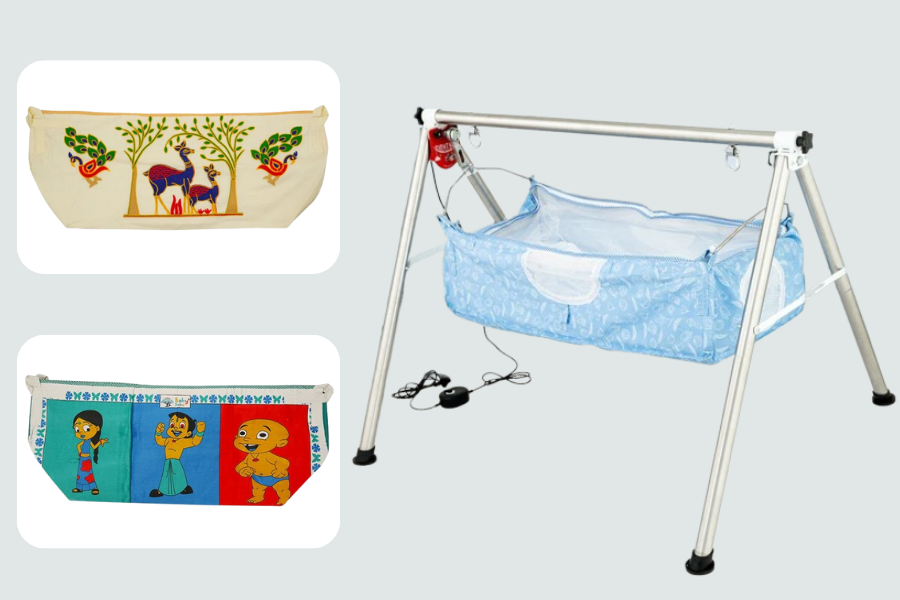When it comes to soothing a newborn, comfort and safety are always at the top of a parent’s mind. One option that has stood the test of time is the cradle hammock. Known for its cozy, womb-like design, it provides babies with gentle rocking and snug support that helps them drift into deep, peaceful sleep.
Selecting the proper hammock for cradle use becomes challenging because of the numerous available options in the market today. A traditional cotton hammock stands alongside modern frame-supported designs, along with versatile options in the hammock market. How can you verify the safety standards of the product for your baby’s protection?
This guide breaks down essential information about safety inspections along with popular hammock styles and useful features which guide you toward choosing the right baby hammock.
Why Choose A Cradle Hammock?
cradle hammock attract popularity because they replicate the natural environment that babies experience during their early development. The rocking motion , together with the rounded design helps babies remember their time in the womb thus establishing a calming connection.
Parents benefit from more than just improved sleep quality when they use these products. The lightweight nature of cradle hammocks together with their portability makes them simple to move between different rooms during setup. Some even double as travel companions, letting you create a comfortable sleep space wherever you go.
Traditional cribs maintain a fixed structure but hammocks provide a gentle body support that commonly minimizes a baby’s distress along with colic reactions. Babies find the swinging movement particularly calming which leads to extended sleep periods and improved sleep patterns.
Safety First: What Parents Should Check
When buying a cradle hammock, safety is non-negotiable. Here are the key things to look out for:
- Durable Materials: Baby skin benefits from cotton and other breathable materials which provide proper airflow to the body.
- Strong Suspension System: The support system must provide a stable and secure feeling whether it includes hooks rods or stands.
- Balanced Design: A proper weight distribution system in a hammock ensures your baby avoids pressure points from uneven weight placement.
- Tested for Infants: Review if the hammock follows standard child safety requirements and provides specific weight and age instructions.
- Firm Setup: Safety becomes compromised when a hammock displays excessive wobbling and tilting motions thus making it unsafe.
Remember: a safe hammock is not a replacement for supervision. Babies should never be left unattended for long periods.
Exploring Different Styles
Not all hammocks are created equal. Here are the most common types:
1. Traditional Fabric Hammocks
- Simple, breathable, and often handmade.
- Ideal for newborns, offering that snug, cocoon-like comfort.
2. Frame-Supported Hammocks
- These come with metal or wooden stands, so you don’t need ceiling hooks.
- Portable and easy to set up in any part of the house.
3. Convertible Hammocks
- Designed to grow with your baby, these can sometimes transform into toddler swings or seats.
- A practical investment if you want more years of use.
4. Automated Hammocks
- Modern versions sometimes come with add-ons like gentle motorized rocking.
- A convenient option for parents who need an extra helping hand.
Each style has its own appeal, so the best choice depends on your space, lifestyle, and how you want to use the hammock.
Features That Add Comfort
Beyond the basics, certain features can make a big difference in day-to-day use:
- Breathable Fabric: Your baby will stay cool and comfortable because the fabric allows air to pass through.
- Washability: The quick and stress-free cleanup process happens because machine-washable fabrics are used.
- Manual or Automatic Rocking: The rocking feature of these hammocks allows parents to choose between hand-rocking or connecting them with automated gentle motion systems.
- Compact Design: This design works best for apartment dwellers and people who need to move it between rooms.
Practical Tips For Parents
- If the hammock includes a stand you must position it on a level surface that remains secure.
- Do not place heavy cushions or large pillows inside because this practice creates suffocation hazards.
- Check the specified weight capacity of the hammock before using it.
- Your baby will need time to adjust to the hammock when transitioning from their current mattress setup.
Safety remains intact when you use these safety guidelines to access the advantages of a hammock.
Are Hammocks Suitable For Every Baby?
A significant number of babies find the soft enclosure of cradle hammocks soothing but individual responses differ between children. Certain babies require solid bedding while others need additional support to achieve comfort. Observing your baby’s reactions remains essential for nursery decisions.
If your baby shows comfort through relaxed sleep patterns and improved rest when placed in a cradle hammock so this item might make an excellent nursery addition.
Final Takeaways: Comfort, Safety, And The Perfect Baby Hammock
A traditional cradle hammock along with contemporary parenting requirements provides a practical solution that delivers comfort. When you want to create a relaxing space for your baby, you should select a design that suits your room while ensuring safety through proper features.
When you’re ready, explore TinyTyke’s range of hammock for cradle options to give your baby the best comfort.

